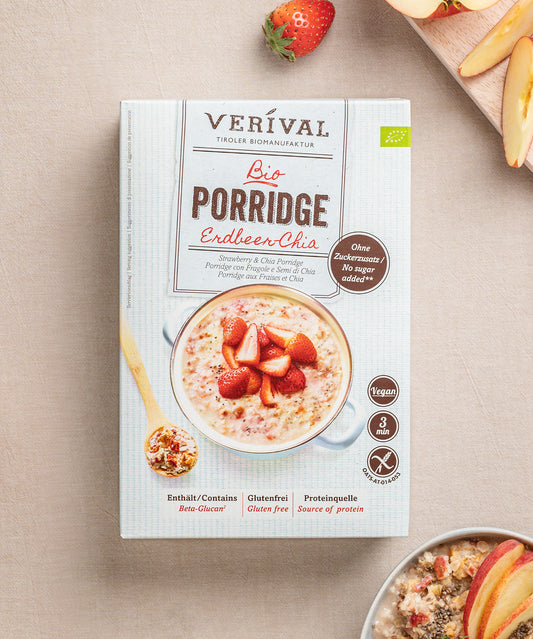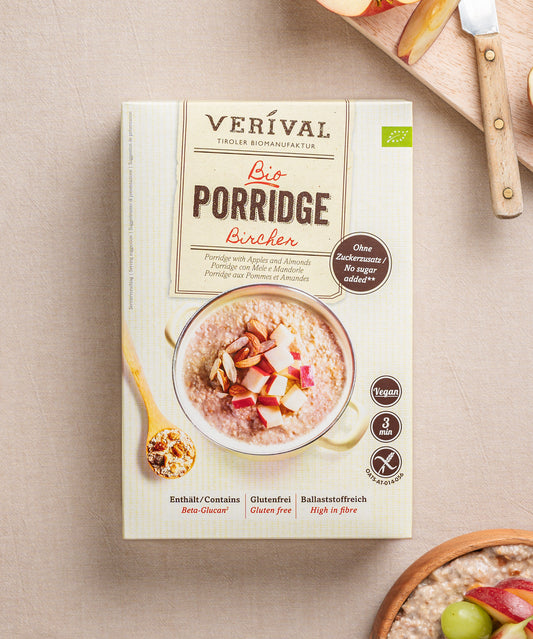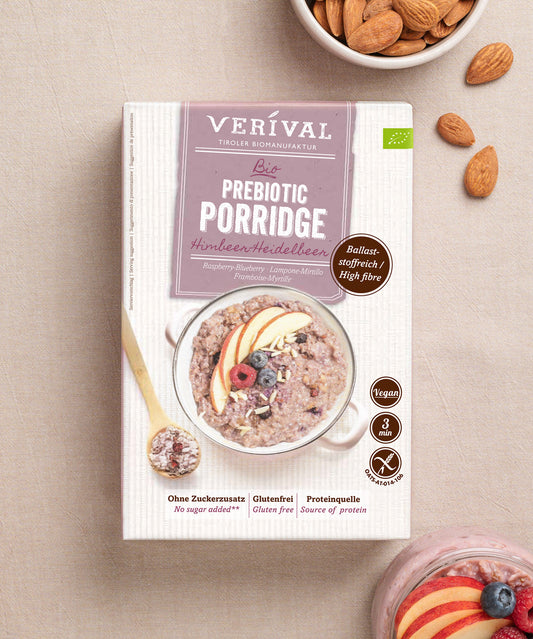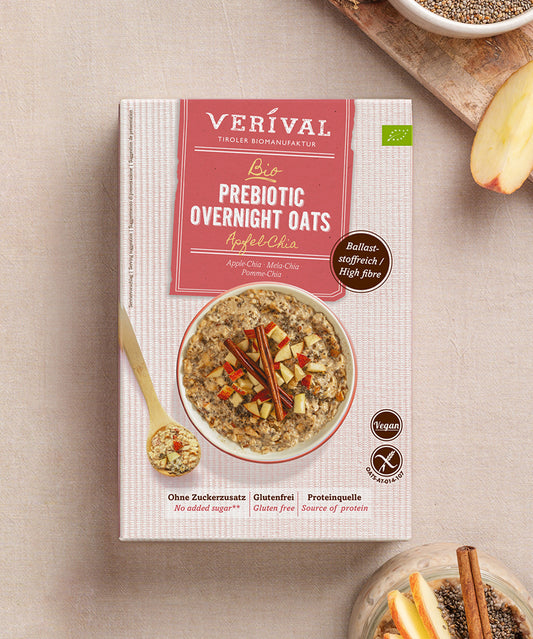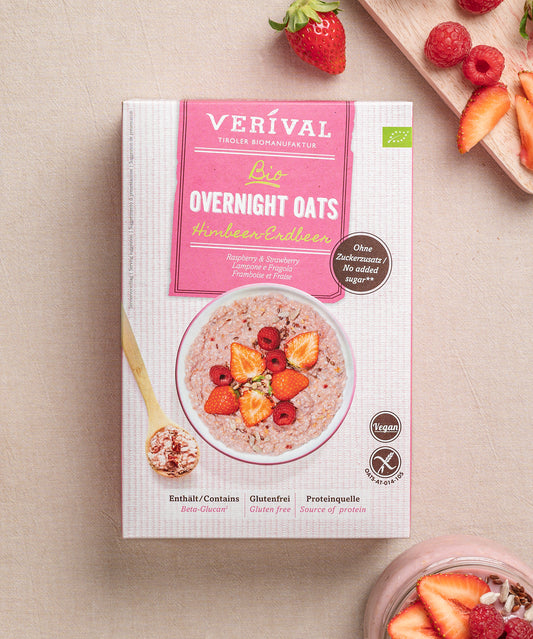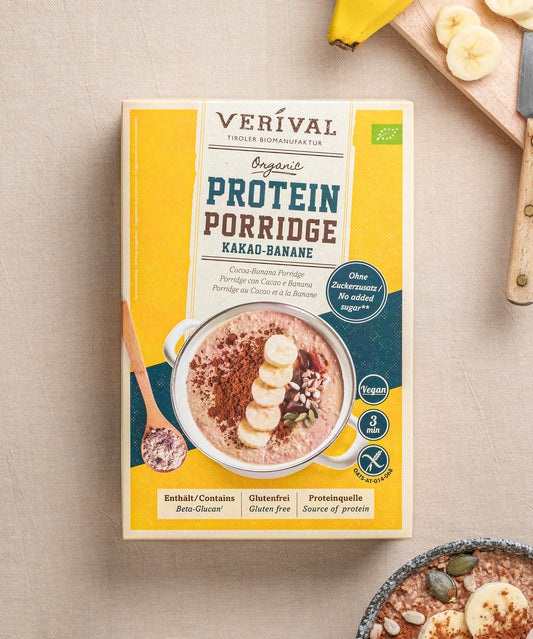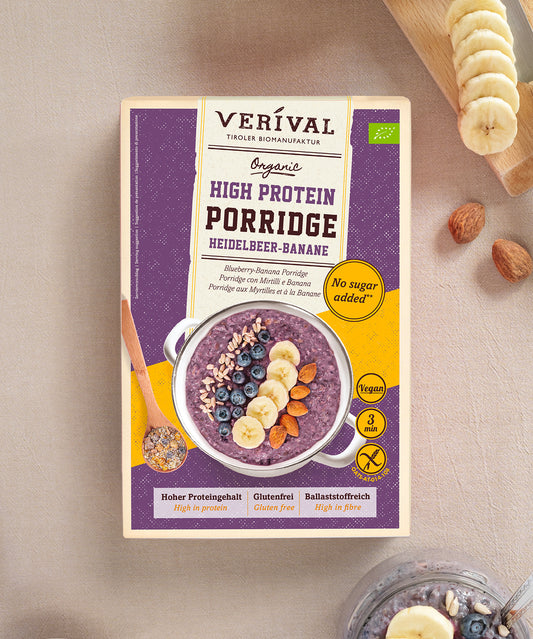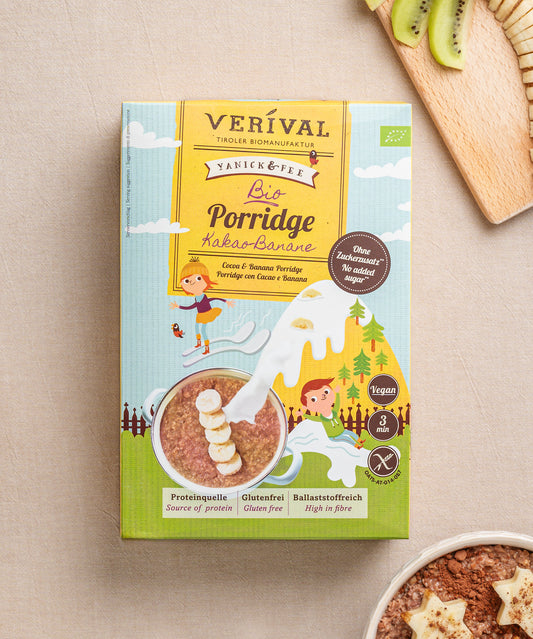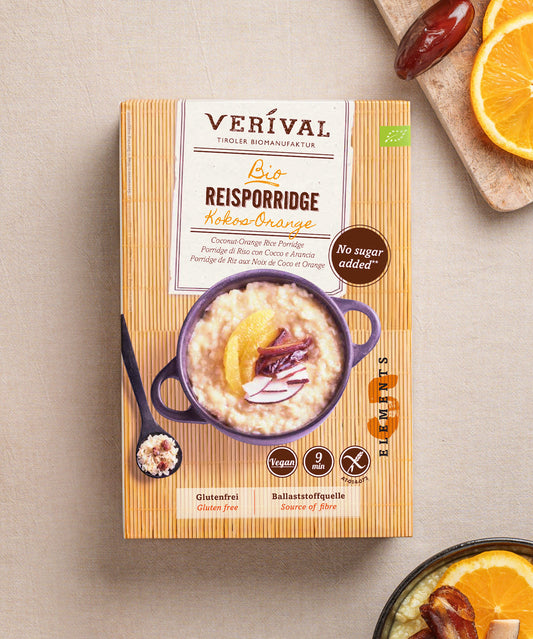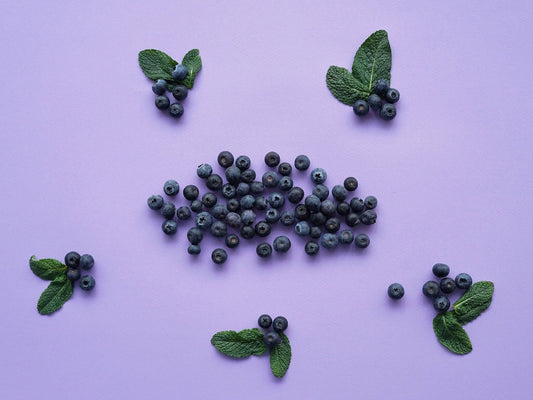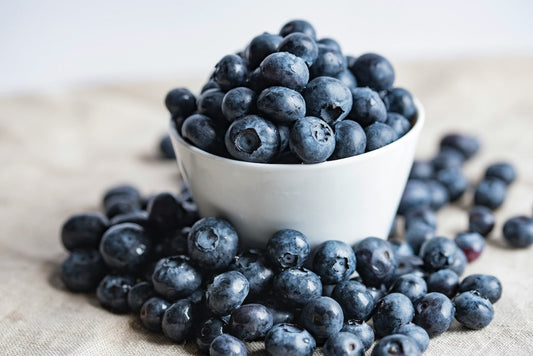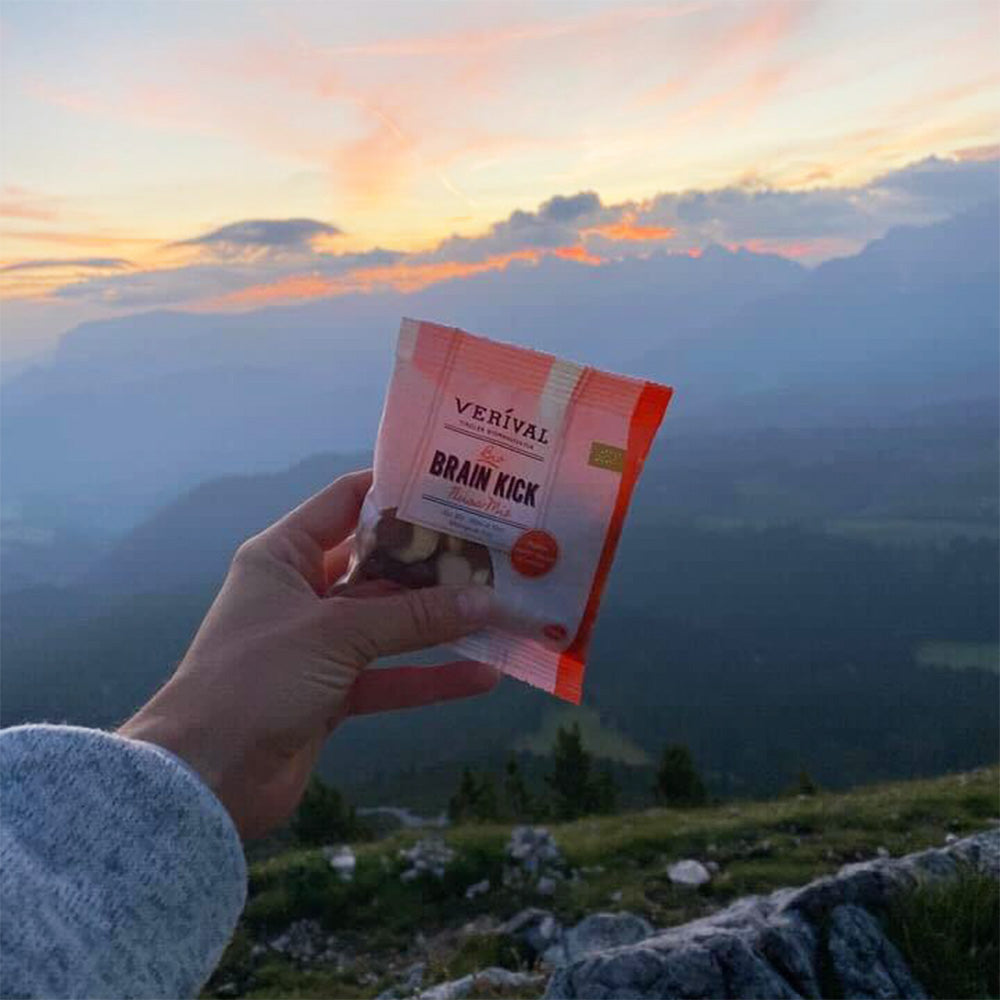Matcha, the bright green powder that is becoming increasingly popular in the world of tea, has a fascinating history and origin. In this article, we cover the history, the art of preparation and the health benefits of matcha.
Start the day full of energy and fit with our Verival breakfast. It's that easy!
The beginnings of matcha
The discovery in China and the journey to Japan
The history of matcha begins in the 8th century when the Chinese monk Eisai traveled to Japan and brought with him the seeds of the tea plant Camellia sinensis. These seeds are the cornerstone of the tea plantations in Japan. Eisai himself wrote the first book about tea in Japan, known as “Kissa Yojoki” or “The Book of Tea”. In it, he described the medicinal and health benefits of drinking tea and recommended green tea as an elixir for health and longevity.
The development in Japan
During the Song Dynasty in China, people began grinding tea leaves into a powder, resulting in a precursor to green tea. But it was in Japan that tea was developed into an art form. Zen monks, who recognized the benefits of matcha for meditation and concentration, played a crucial role in its development.
In the 12th century, the monk Eisai wrote that the green powder “refreshes the soul, invigorates the body, awakens the senses and banishes the spirits”. This focus on mindfulness and presence when drinking tea is still reflected in Japanese tea culture today.
Matcha is an essential part of Japanese culture
Matcha and Japanese culture
The green powder is an essential part of Japanese culture and is valued as a great asset there. Japanese culture stands for harmony and cohesion – and so does the green gold. The popular powder is not only a superfood but also a cultural asset!
The tea ceremony and Sen no Rikyū
The Japanese tea ceremony, also known as “chanoyu”, was significantly influenced by Sen no Rikyū, a famous tea master, in the 16th century. Rikyū refined and simplified the tea ceremony to emphasize the beauty of the moment and the harmony between host and guest.
It became the central element of this ceremony, which is about celebrating the serenity and aesthetics of the moment. The careful preparation and serving of matcha have become an expression of appreciation and respect.
Cherry blossom season and hanami
During the cherry blossom season in Japan, drinking matcha under blossoming cherry trees is a tradition. This practice, known as “hanami”, brings people together to enjoy the beauty of nature and appreciate the moment. During this time, matcha symbolizes the freshness of spring and the transience of life. Enjoying matcha under blossoming cherry trees is a poetic and meditative experience that highlights our connection to nature.
Are you looking for breakfast ideas? Then you've come to the right place!
The production of Matcha
The cultivation of the Matcha plant
Matcha is made from specially cultivated tea plants that are shaded for about three weeks before harvest. This shading, known as “Japanese shade cultivation”, causes the plants to produce more chlorophyll and their leaves to develop a deep green color. This gives the leaves their characteristic sweet taste and bright green color. The shade cultivation is a laborious process that significantly influences the quality of the matcha.
About the harvest and processing
The matcha plant is harvested by hand. Only the youngest leaves are selected. These are then steamed, dried and the stems and veins are removed. This careful processing helps to preserve the quality and aroma of the matcha. After processing, the leaves are ground into tencha, a type of leaf tea.
Grinding and granite mills
The defining characteristic of matcha is its fine powder. The dried leaves are ground into a fine powder in granite mills. This process can take hours to achieve the desired texture. The mills are designed to gently grind the leaves into a fine powder without destroying the valuable ingredients. The result is a powder so fine that it dissolves in water to create a smooth, creamy drink.
Matcha today
Health benefits of the green gold
Matcha is not only delicious, but also healthy. It is rich in antioxidants, vitamins and minerals, especially EGCG (epigallocatechin gallate), a powerful antioxidant. This has numerous health benefits.
Matcha can boost concentration, stimulate the metabolism and strengthen the immune system. It is also an excellent source of natural energy because it contains both caffeine and L-theanine, resulting in a gentle and long-lasting energy boost without the unwanted side effects of caffeine alone.
The global hype surrounding matcha
In recent years, the green tea has taken the world by storm. You can find matcha lattes in cafes around the world, and it is used in a variety of foods and drinks, from ice cream to cookies.
Matcha's versatility has made it a staple in modern cuisine. Although Japan is still the main producer, it is now also grown in other parts of the world, resulting in different flavor profiles and qualities. The culinary world has embraced matcha, and you can find it in desserts, pastries, and savory dishes, as well as in numerous breakfast combinations—even in porridge!
Conclusion
Matcha, the green gold from Japan, has a long and rich history that is closely linked to Japanese culture and philosophy. From its humble beginnings in China, to the development of a unique Japanese tea culture, to its global popularity today, matcha has come a long way.
It embodies harmony between nature and man, between tradition and modernity. If you haven't tried matcha yet, you should definitely consider it to immerse yourself in the fascinating world of this green wonder and discover the rich history, art of preparation and health benefits of this amazing tea. Enjoy it in all its facets, be it in a traditional tea ceremony or in modern culinary creations, and experience the magic of this unique green drink.
Discover the Verival porridge range here
Frequently asked questions
What is matcha good for?
Matcha is known for its many health benefits. It contains a high concentration of antioxidants, especially EGCG, which can reduce inflammation, boost the metabolism and strengthen the immune system. Matcha can increase concentration and attention, reduce stress and increase overall energy. Due to its calming effect on the psyche, it is also popular in meditation and mindfulness practice.
Is matcha really healthy?
Yes, matcha is healthy. Due to its high concentration of antioxidants and ability to boost metabolism, matcha is often referred to as a “superfood.” It can contribute to overall health, strengthen the immune system, and improve skin health. However, it should be enjoyed in moderation, as excessive consumption can have unwanted side effects.
How much matcha a day is healthy?
The recommended daily amount of matcha varies depending on individual needs and tolerance. In general, one to three teaspoons of matcha per day is considered appropriate to benefit from its health benefits. However, it is important to pay attention to your own reaction and adjust the amount, as some people are more sensitive to caffeine.
Can you lose weight with matcha?
Matcha, as part of a healthy lifestyle and balanced diet, can help you manage your weight. Due to its ability to boost metabolism and provide energy, matcha can promote physical activity and fat burning. However, matcha is not a miracle weight-loss product and should be combined with an overall healthy diet and adequate exercise.
What is matcha?
Matcha is a special green tea from Japan made from finely ground tea leaves. It has a bright green powder that comes from the Camellia sinensis variety that is shaded for about three weeks before harvest to improve flavor and quality.
How does matcha taste/what does it taste like?
Matcha has a unique, earthy flavor with sweet notes and a slight bitterness. The flavor can vary depending on the quality of the matcha and the preparation technique. Higher-quality matcha often has a gentle sweetness and a richer flavor.
What is matcha powder?
Matcha powder is the finely ground green powder made from the tea leaves. It is used to prepare matcha tea, but can also be used in smoothies, baked goods, and other recipes.
Difference between matcha and green tea?
The main difference between matcha and regular green tea is in the preparation and use of the whole tea leaves. In matcha, the tea leaves are ground into a fine powder, while in green tea, the leaves are steeped in water. This results in different flavor profiles and concentrations of ingredients.
Where does matcha come from?
Matcha has its roots in China, but it was further developed and perfected in Japan. Today, high-quality matcha is mainly grown in various regions of Japan, such as Uji and Nishio.
Does matcha have a calming effect?
Yes, matcha has a calming effect due to the L-theanine it contains, an amino acid that can relax brain function. This combination of L-theanine and caffeine in matcha results in a concentrated but balanced energy boost.
Which contains more caffeine: matcha or coffee?
Although the amount of caffeine in matcha varies, it generally contains less caffeine than coffee. A cup of matcha contains about 30-70 mg of caffeine, while a cup of coffee can contain about 95 mg or more. The effects of matcha caffeine are often described as gentler and longer lasting because it is accompanied by L-theanine, which has a calming effect.


